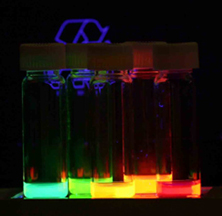HKUST Breakthrough: Quantum Dot Photoreductant Uses 99% Less Light Energy

Chemists at the School of Science of the Hong Kong University of Science and Technology (HKUST) have unveiled a groundbreaking quantum dot photoreductant designed to significantly enhance the efficiency of organic reactions. This innovative system reportedly utilizes only 1% of the light energy typically required by conventional photocatalytic methods, marking a notable advancement in the field of photocatalysis.
The research, led by Professor Lu Haipeng from the Department of Chemistry, introduces a photocatalytic mechanism that harnesses visible-light-absorbing quantum dots (QDs). The significant efficiency gain is attributed to a novel two-photon spin-exchange Auger process facilitated by manganese (Mn²⁺)-doped CdS/ZnS QDs. The findings were published in the peer-reviewed journal Nature Communications on July 3, 2025.
Quantum dots have been recognized for their potential in photoredox chemistry, yet their application in organic transformations has not kept pace with smaller molecule photosensitizers, primarily due to a limited understanding of their photophysical properties. Previous studies had explored the generation of hot electrons from quantum dots, but achieving effective hot-electron production under mild conditions remained a considerable challenge. Prof. Lu's team addressed this issue with their new photocatalytic system.
The innovative research demonstrates that the hot electrons produced via this new mechanism can facilitate a variety of organic transformations, including Birch reduction and the reductive cleavage of various chemical bonds such as C-Cl and C-Br. Notably, these reactions can accommodate substrate reduction potentials as low as -3.4 V (versus saturated calomel electrode, SCE).
In detailing the implications of this study, Professor Lu stated, "The study underscores the unprecedented potential of quantum-confined semiconductors to facilitate challenging organic transformations that were previously unattainable with conventional molecular photocatalysts."
The development of this photoreductant not only presents a significant leap in reducing energy consumption in organic synthesis but also paves the way for programmable chemical reactions through the modulation of light intensity. This could lead to more sustainable practices in chemical manufacturing and potentially reduce the environmental impact of conventional methods.
The research highlights a broader trend towards the integration of nanotechnology and photochemistry in addressing global challenges, such as energy efficiency and sustainable chemical processes. As the field of photocatalysis continues to evolve, this breakthrough from HKUST could inspire further innovations and applications in various sectors, including pharmaceuticals and materials science.
In summary, the introduction of a quantum dot photoreductant that operates at such low energy levels represents a significant advancement in the field of organic synthesis, potentially transforming practices in both academic and industrial laboratories worldwide. The implications of this research extend not only to the efficiency of chemical reactions but also to the broader objectives of sustainability and energy conservation in chemistry.
Advertisement
Tags
Advertisement





